The content of the article
Decorative rabbits are smart and loyal. Ears can be taught to the team "Fu!" And "To me!". They do not bring slippers, but respond to their name. Quickly get used to the owner and very bored when they are alone or with strangers. Fluffy kids need love and proper care, otherwise they often get sick and die early.
Pet choice
Ornamental rabbits are bought at a pet store or from breeders. Choose a healthy animal with thick and shiny hair, clean eyes and nose. The pet must be mobile and react to sounds, touches. If the rabbit looks scruffy and tired, constantly sitting in one corner or lying, it means that he is sick.
A new member of the family is immediately taken to the vet to cut the claws.The first procedure is carried out by the doctor, because in the nails of the rabbit there are many blood vessels that are easily touched. A professional will show how to properly use tweezers for a manicure so as not to provoke bleeding.
The rabbit is vaccinated, the ears are cleaned and the eyes are washed. Treat pet from worms and lice. A clean and vaccinated baby is brought home, introduced to his new cage and waiting for him to adapt.
Spacious and comfortable
Rabbits need space to jump and run. In pets who live in a tight kennel and move a little, their bones become thinner, and their joints become fragile and weak. The cage should be 4-6 times bigger than a rabbit. Recommend options with a plastic pallet. Rabbits constantly get stuck in the slatted bottom and catch on with their claws.
If the pan is too slippery, it is covered with a rubber or fabric mat. A layer of straw or sawdust is poured on top. Rabbits do not tolerate harsh aromas, so the filler should be odorless.
In the corner of the cage, a small house is installed, because eared animals are used to sleeping in burrows.Suitable wooden version or cardboard, upholstered with a cloth. Inside put a soft rug or sawdust.
Rabbits neat. They do not defecate next to the trough or water bowl and quickly master the cat tray. A plastic pallet is installed opposite the house and the filler is regularly changed. Pet will not go to the dirty toilet.
Decorative rabbits have a sensitive and tender stomach, so food should not be thrown on the litter. The bowl should be large and heavy, preferably ceramic. Eared pets love to make noise. They raise the dishes with their teeth, knocking plates on the floor or iron bars. The drinker is attached to the cage so that the rabbit does not overturn it. Recommended automatic varieties that serve water in portions.
In a large apartment for an animal, a special aviary or a high-walled corral is installed so that the pet can walk and frolic. Rabbits will love the wheel for running, old rags and balls with bells.
Eared animals constantly gnaw something, even if they have recently eaten, therefore the pet should have a thick cherry or pear branch. Another fruit tree will also work, as well as an acacia or maple tree.It is forbidden to give spruce or pine blanks, in which a lot of resin.
Adaptation
Rabbits are not as bold and gullible as puppies or kittens. A new family member will stay in their hole for at least 3-4 days until they get used to the surrounding smells and sounds. During this period, you need to treat your baby with dry food and hay or grass, regularly change the water, make sure that other pets do not come to the cage.
Eared pet can not be ironed while he eats or drinks, otherwise the pet will be very frightened and refuse food. The rabbit will quickly get used to the owner, if you constantly talk to him. To tell something in a quiet gentle voice.
When the animal stops being afraid and comes out of the house, they offer it a treat and give it a sniff to make it learn to recognize the smell of the host. Constantly repeat the nickname, so that the rabbit understood his name.
First, the child is taught to touch, and when he stops shuddering and pressing his ears from each stroking, they try to take him in his arms. You can not insist, if the pet is pulled out and resists. Rabbit bones are fragile. It is very easy to break the baby's foot or spine, if you squeeze it too much or miss it on the floor.
Walking around the apartment
Rabbit accustomed and now asking for the will? Eared pets should walk around the apartment only under the supervision of the owner. First, they hide all electrical appliances and wires, remove dangerous and toxic objects from the floor, and then release the animal from the cage.
You can not leave the rabbit alone and go to work or to the store. Kids and teens love to jump on sofas, armchairs, chairs. They can lose their balance and fall or land badly, breaking their ribs or paw.
Eared pets gnaw furniture and shoes, eat wallpaper and carpets. Pile or paper clogs the stomach of the animal, causing indigestion. You have to wash your intestines on your own or go to the vet.
Follow the rabbit if you have other animals in the house. Babies, frightened by a dog or cat, can hide under a cupboard and get stuck, hit the wall and get hurt.
Hygiene procedures
Eared pets neat, so they regularly lick and wash. They are always neat and smell good.
It is impossible to bathe rabbits. Pet's coat is covered with a protective layer of fat, which is responsible for the thickness and shine of the villi. If you constantly flush the sebum,the animal gets dandruff and irritation. Wool falls out, becomes dull.
Rabbits are bathed if they get very dirty after walking on the street. Pour warm water into a basin, add a little shampoo for cats or rodents. At the bottom of the tank put a towel or cloth made of cloth to make your pet comfortable.
Rinse baby 2-3 times with clean water to wash the shampoo residues. The rabbit is wrapped in a terry towel and waited for its skin to dry. A wet animal should not be let out into the street or into a room with open windows, because due to drafts it can catch a cold and die.
It is forbidden to dry your pet with a hairdryer. Humming appliance scares pet. He is experiencing tremendous stress, because of which he can get sick or refuse to eat. Hot air overdries the skin of the baby, so the coat becomes stiff, brittle and dull.
The eyes of the animal periodically rubbed with cotton swabs dipped in warm boiled water. Regularly inspect the auricles. If a lot of brown sulfur has accumulated inside, it is removed with gauze napkins and a weak solution of potassium permanganate or boric acid.
Long-haired Angora rabbits are trimmed to protect against heat stroke and tangles. The procedure is carried out every 2-3 months with special scissors or a machine.
Eared pets are regularly brushed with a soft brush to remove excess wool. When an animal licks and eats fallen villi, they are not digested, but remain in the stomach, turning into a lump. A rabbit does not always succeed in burping him, so you have to give the baby drugs or take him to the vet. Hairs also impair digestion, leading to the development of gastrointestinal diseases.
Ordinary short-haired rabbits are combed three times a week, and during the molt period daily.
Cell cleaning
To the apartment does not stink of rotten hay and feces, you need to regularly change the litter. If the rabbit uses a cat tray, the cage is cleaned every 2–3 days. Pet refuses to go to a special toilet? We'll have to throw sawdust daily.
The cell tray is wiped with a damp cloth and odorless detergent. Concentrated flavors irritate rabbits and impair their sense of smell.Bowls for water and dry mixes are rinsed twice a day to prevent bacteria from growing in the dishes.
Proper nutrition
The health of a rabbit depends on its diet. In winter, a pet is given hay. It improves the digestion of the animal, cleans the intestines from swallowed wool. The correct fresh hay has a light green tint and aroma of dried grass.
In spring and summer, greens are given to eared pets:
- dandelion leaves and flowers;
- sagebrush;
- clover;
- yarrow;
- sage.
Grass is harvested in the field. You can not feed the rabbit plants that grow near the highway. Greens must be dried. If an animal eats a sprig of yarrow, on which there were droplets of dew, its stomach will inflate.
Young individuals need protein and calcium for normal development of muscles and bones. The rabbit will receive protein from groats: buckwheat, oats, barley. Wheat and barley grains and fresh corn are rich in protein. A lot of calcium is contained in chalk. A piece of mineral is placed in a cage with a sprig of fruit tree so that the pet sharpens their teeth and replenishes their vitamins in the body. Give the rabbit feed or special mixtures intended for eared pets.The main thing is that they do not have dried fruits or nuts.
Adult animals are recommended vegetables and fruits:
- Chinese cabbage;
- carrot;
- cored apples;
- Jerusalem artichoke.
Young individuals are given more grain and hay, and juicy feed is recommended for adults. Vegetables and herbs protect pets from obesity and liver problems.
The rabbit is given some grain or apples so that the food will not lie in the plate for a long time. Eared pets need distilled water. Mineral and carbonated is prohibited.
To prevent the rabbit from scattering hay all over the cage, special hanging balls or feeders are bought for dried grass. They are plastic and iron, attached to the bars.
Tip: Furry pets have fast digestion. A rabbit that has recently eaten cannot be picked up, otherwise it will be necessary to wash them from the remnants of the digested apple or wheat.
Planting in the tray
The owner, who is going to release the animal from the cage, should accustom him to the cat's toilet, so as not to have to wipe the puddles and sweep away the feces.
From the cage for a while the litter is removed from the straw. In the corner put a plastic pallet, which is filled with sawdust. As soon as the rabbit wants to defecate, it is lifted by the withers and transferred to the toilet. There are enough 3-4 lessons for young animals to understand what a cat's toilet is intended for.
If the rabbit walking around the apartment, made a puddle in the middle of the room, then it is wiped. A rag soaked in urine is put in a tray and a rabbit is brought in to sniff the cloth. You can not poke the animal nose, slap or shake.
How to pick up
The baby is forbidden to grab by the ears, otherwise the animal's hearing will deteriorate. In the hanging position the rabbit is breathing heavily. The pet has a quick heartbeat, he starts to panic and break out.
A fluffy pet is lifted with both hands, with palms under the chest and stomach. If the animal breaks out, it is better to lower it to the floor. You can not grab the baby by the paws, squeeze the chest.
Noisy neighbors
Rabbits, like cats, sleep during the day, and in the evening and at night they are awake, making noisy concerts. Animals knock their paws on the cage and toss the dishes, roll the balls and run in the wheel.How to calm the raging pet? Cover the cage with a thick blanket or towel, leaving a small hole for ventilation.
Additional tips
Rabbits do not tolerate heat and drafts. In the summer, so that the animal does not get a heat stroke, you need to trim a thick fur coat and put a bottle of frozen water near the house. The cage is covered with a wet towel.
Mature males and females may require a mating partner. During this period, pets become aggressive, throwing at people and other animals. The owner has to buy a second pet and breed decorative rabbits. But it is easier to sterilize a pet when it is 8–9 months old.
Decorative rabbits are cute, but weak creatures. They suffer from improper care and unbalanced nutrition. Eared pets need constant care and attention. If a person is not ready to spend time on combing wool, trimming claws and cleaning the cage, he is advised not to start a decorative rabbit.
Video: care for a home decorative rabbit

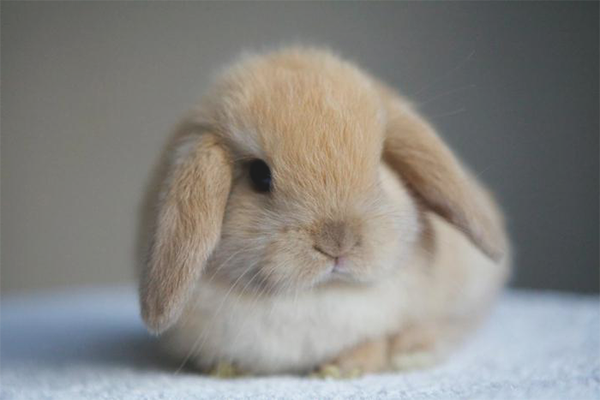
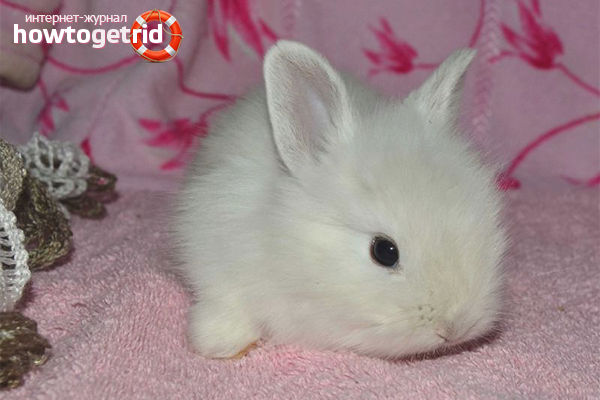
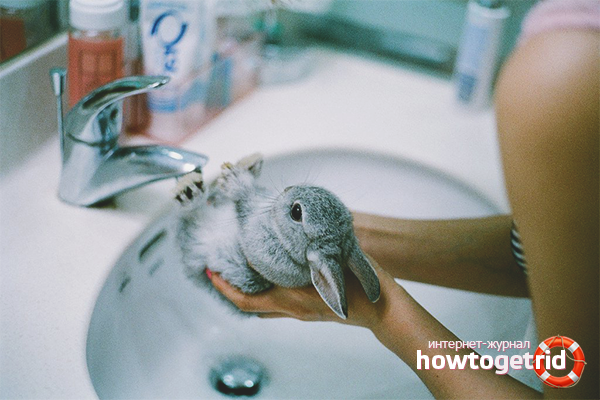
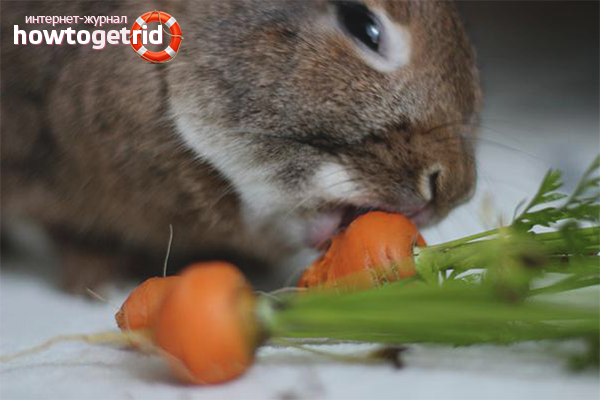


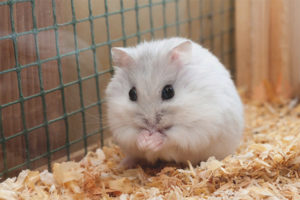

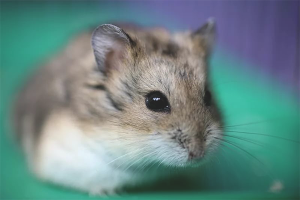
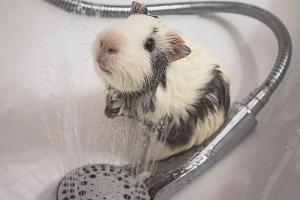



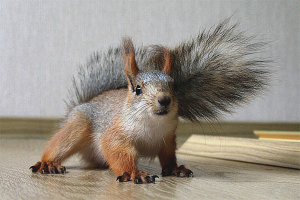
To send